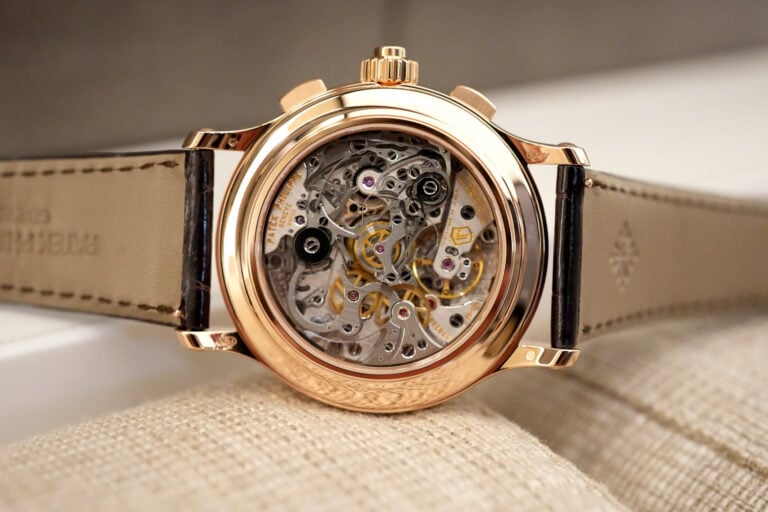The Armando Legin Inveni? and its Unconventional Approach to the Passage of Time
A unique hand construction flips the notion of passing time on its head.

It’s not often that we get to introduce completely new brands that do things in a completely unique way. Sure, most watches we present, even the ones from breakout watchmakers, still rely on the same format of central hands making a rotation once every 12 hours. Watches that rewrite or even completely throw out the rulebook are far and few between. Brands like Urwerk and MB&F have redefined the concept of the passage of time with their hyper-creative philosophy on watchmaking. In the wake of such brands, plenty of brands have come and gone that tried to capture the imagination of the crowd with similar ‘out-there’ ideas. It’s extremely challenging to build a concept into a sustainable brand, but it’s not entirely impossible. This is exactly what a young man from Slovenia is attempting to achieve as he launches his eponymous brand with a very unconventional first watch. Named Armando Legin, he makes his debut with a watch called the Inveni?, which roughly translates to “I come upon” in Latin.
The concept of a watch has remained almost uniform for centuries, even though plenty of watchmakers have played around with how to display the passage of time. The most common practice is through separate hands for the hours, minutes, and optionally the seconds, mounted either in the centre or off to the side. Exceptions to the rules are watches like the A. Lange & Söhne Zeitwerk, the Andersen Genève Jumping Hours, the Trilobe Une Folle Journée or the Urwerk UR-112 Aggregat Odyssee. Where the Inveni? differs, though, is through a patent-pending construction called the transversal indicator, where everything but the minute track moves, which I’ll explain in a bit.
Armando Legin, only 36 years old at the moment, was born in Ljubljana, Slovenia and has spent most of his adult life running the family business with his brother, David Legin. From a very young age, Armando has had an intrinsic interest in watches and watchmaking. As we all undoubtedly have done at least once in our lives, Armando had ideas about watchmaking concepts, and in 2019, he decided to put them to paper. He started sketching and designing his vision of a mechanical watch, which eventually materialised in the Inveni?. His idea was to use a single hand for hours and minutes instead of two and to hide unnecessary information. Chance encounters with watchmaker Marc Jenni and industry veteran Vicente Mafe accelerated the project, along with help from watch designer Fabrice Gonet and Olivier Leu, the founder of Revelation Watches.
The final design of the case for the Inveni? is an edgy, contemporary steel structure of 39 components. It has 3D skeletonised lugs and is finished by hand in a play of straight brushed surfaces intersected with polished elements. The central container of the case protrudes from underneath the top elements on both the left and the right side of the watch. It measures 42mm diagonally, with a height of 13.6mm and a lug-to-lug of 53mm. On paper, that sounds quite substantial, but the proof in the pudding is when you put it on the wrist. A sapphire crystal protects the dial, as well as the movement on the backside.
I’ve already mentioned Armando Legin’s transversal indicator, designed with the rest of his team, but there’s far more to the display than just that. It starts with a brass base dial, finished in black and with a printed minute track in white. That’s the static element of the dial, as everything else is in constant motion. The simplest element beyond the base dial is the double-length seconds hand in the centre. This has a long white tip to stand out from the predominantly matte black base, with the rest of the hand blending into the background.
But the main attraction comes from that transversal indicator, which shows you the hours and minutes with a single hand. Mounted on top of everything is the indicator with a large tip for the hours and a narrower tip for the minutes at opposite ends. This rotates at the speed a central minute hand would and partially obscures the hour numerals underneath. The hour indices are printed on a sapphire disc that also rotates, albeit 1/12th slower than the transversal indicator. It’s best illustrated in the video below, which is sped up to get a sense of the whole construction in motion over about a two-hour period;
The tricky bit as time passes is to get accustomed to the hours and minutes being in different places on the dial every time, as opposed to having them in fixed positions. However, it does provide a unique and refreshing take on the concept of timekeeping, and I’m sure it will become intuitive over time. The entire display is made possible thanks to an in-house developed module mounted on top of a base movement by Vaucher. This is driven by a central rotor, skeletonised to match the style of the case, which provides energy to the double barrels. It runs at a rate of 28,800vph and delivers a power reserve of 50 hours. The finishing includes rhodium-plating and hand-applied bevelled edges.
This very unconventional yet captivating Armando Legin Inveni? has a low-volume production run of only two to three pieces per month. This edition of the Inveni? is limited to just 25 pieces, but more iterations are bound to follow. The contemporary and edgy watch comes on a black calfskin leather strap with dark grey stitching and a steel pin buckle. The price is set at USD 17,900. But without seeing the watch in person and experiencing its unique approach to the passage of time, it’s hard to pass judgement on the price for now.
For more information, please visit ArmandoLegin.com.













1 response
Awesomely cool!